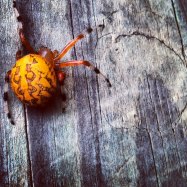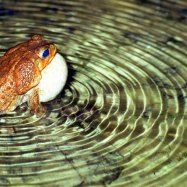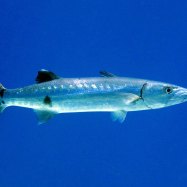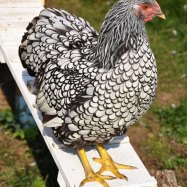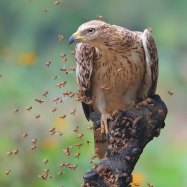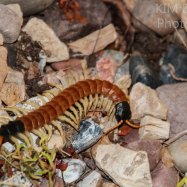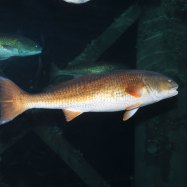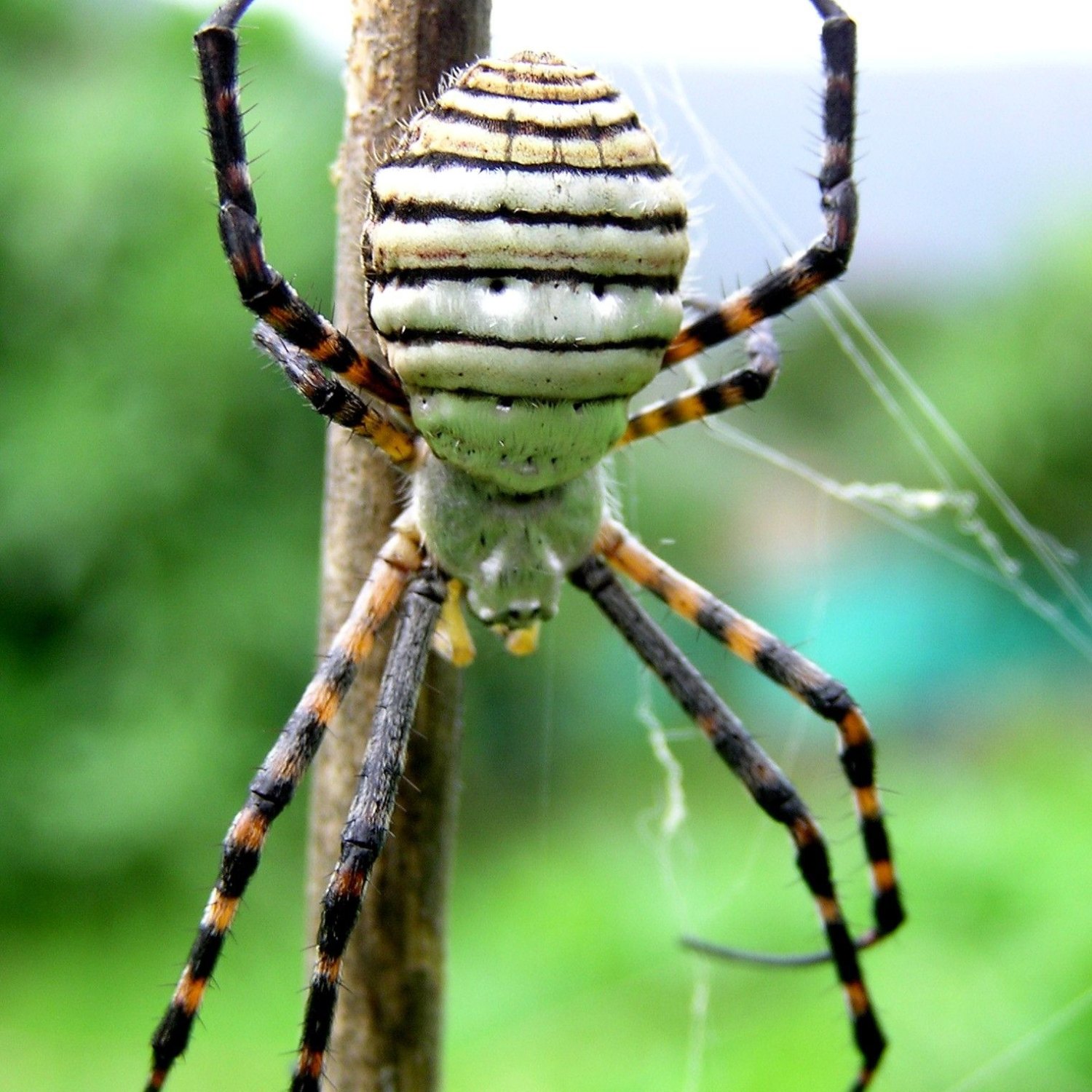
Garden Spider
Female - 15-20 mm, Male - 5-10 mm
Did you know that the Garden Spider, also known as the Orb-weaver, can be found worldwide? These spiders have a round abdomen and long, slender legs. Females can reach up to 15-20 mm in length while males only reach 5-10 mm. They belong to the Araneidae family and are commonly seen in gardens, hence their name. Keep an eye out for these fascinating creatures in your backyard! #GardenSpider #OrbWeaver #FascinatingFacts #Araneidae #NatureLovers
Animal Details Summary:
Common Name: Garden Spider
Kingdom: Animalia
Habitat: Gardens, forests, meadows
The Beautiful and Fearless Garden Spider
Have you ever come across a beautiful spider in your garden? Chances are, you might have seen a Garden Spider, scientifically known as 'Araneus diadematus.’ These eight-legged creatures are fascinating to observe and are a vital part of our ecosystem. In this article, we will explore the characteristics, habitat, feeding habits, and geographical distribution of this incredible animal.A Member of the Arachnid Family
Garden spiders belong to the kingdom Animalia, phylum Arthropoda, and class Arachnida Garden Spider. These creatures are part of the order Araneae and the family Araneidae. These spiders can be found in various habitats, including gardens, forests, and meadows, making them adaptable and widespread.Distinct Features
Garden spiders are well-known for their distinctive abdominal patterns and variable coloring. Their colors can range from brown to gray, and sometimes even yellow or reddish-brown. What makes them truly stand out are the intricate patterns on their abdomens, which can vary in shape and size, making each spider unique.Furthermore, Garden spiders have a round abdomen and long, slender legs, giving them a characteristic appearance. These spiders may be small, with females measuring between 15-20 mm and males ranging from 5-10 mm in length, but their fearlessness and agility make them stand out in the animal kingdom.
A Carnivorous Diet
As with most spiders, Garden spiders are carnivorous, meaning their diet consists of other insects and small arthropods. These spiders use their webs to catch prey, which they then immobilize with their venom Golden Lancehead. They have poor eyesight, so they use the vibrations in their web to detect when an unsuspecting insect gets trapped.Once the prey is caught, Garden spiders use their fangs to inject venom, which paralyzes the insect and breaks down its body. The spider then sucks out the liquefied internal organs, leaving only the exoskeleton behind. This process is an essential part of controlling insect populations, making Garden spiders valuable allies for gardeners and farmers.
Habitat and Distribution
As the name suggests, Garden spiders can be found in gardens, making them familiar to most people. However, their habitat is not limited to just gardens. They are found in various parts of Europe and North America, making them one of the most widespread spider species.These spiders are not native to just one specific country; they can be found in various countries in Europe and North America. Furthermore, due to their ability to adapt to different environments, they are now found in gardens all over the world. This further adds to their vital role in controlling the insect population, no matter where they reside.
The Fascinating World of Garden Spiders
Aside from their appearance and feeding habits, there are more fascinating facts about Garden spiders. For instance, they are known for their impressive silk-spinning skills. These spiders have glands in their abdomen that produce silk, which they use to build their webs.Their webs may look delicate, but they are incredibly strong. They have the strength to withstand strong winds and support the weight of insects caught in them. In addition to using webs to catch prey, these spiders also use their silk to create a sac where they deposit their eggs and protect them until they hatch.
Moreover, Garden spiders use silk to create a type of "balloon" that allows them to float in the air and travel to new areas. This process, called "ballooning," helps them expand their range and find new places to call home.
The Fear Factor and Misconceptions
While Garden spiders are not venomous to humans, they can still invoke fear in some people due to their appearance. The common misconception that all spiders are dangerous and out to harm humans contributes to this fear. However, Garden spiders play a vital role in maintaining balance in the ecosystem, and they rarely pose any threat to humans.Moreover, spiders, in general, are not aggressive creatures and will only bite as a defense mechanism when they feel threatened. And while their venom may be effective in paralyzing their prey, it is not potent enough to cause harm to humans.
The Benefits of Having Garden Spiders
As mentioned earlier, Garden spiders help keep the insect population under control, making them an important part of the food chain. Their webs are also beneficial for controlling pests, as they catch a wide variety of insects, including flies, mosquitos, and even pesky garden pests.Furthermore, spiders are a crucial part of the natural ecosystem, playing a crucial role in the nutrient cycle. As they feed on insects, they also release nutrients back into the soil when they die, aiding in plant growth.
Closing Thoughts
Garden spiders may not be everyone's favorite animal, but they play a significant role in maintaining our ecosystem's balance. Their impressive silk-spinning abilities, unique appearance, and vital role in insect control make them fascinating creatures.So, the next time you see a Garden spider in your garden, take a moment to appreciate its beauty and contribution to our ecosystem. Remember, they are not to be feared, but rather respected for the vital role they play in our environment.

Garden Spider
Animal Details Garden Spider - Scientific Name: Araneus diadematus
- Category: Animals G
- Scientific Name: Araneus diadematus
- Common Name: Garden Spider
- Kingdom: Animalia
- Phylum: Arthropoda
- Class: Arachnida
- Order: Araneae
- Family: Araneidae
- Habitat: Gardens, forests, meadows
- Feeding Method: Carnivorous
- Geographical Distribution: Europe, North America
- Country of Origin: Various countries in Europe and North America
- Location: Worldwide
- Animal Coloration: Variable, typically brown or gray with distinctive abdominal patterns
- Body Shape: Round abdomen with long, slender legs
- Length: Female - 15-20 mm, Male - 5-10 mm
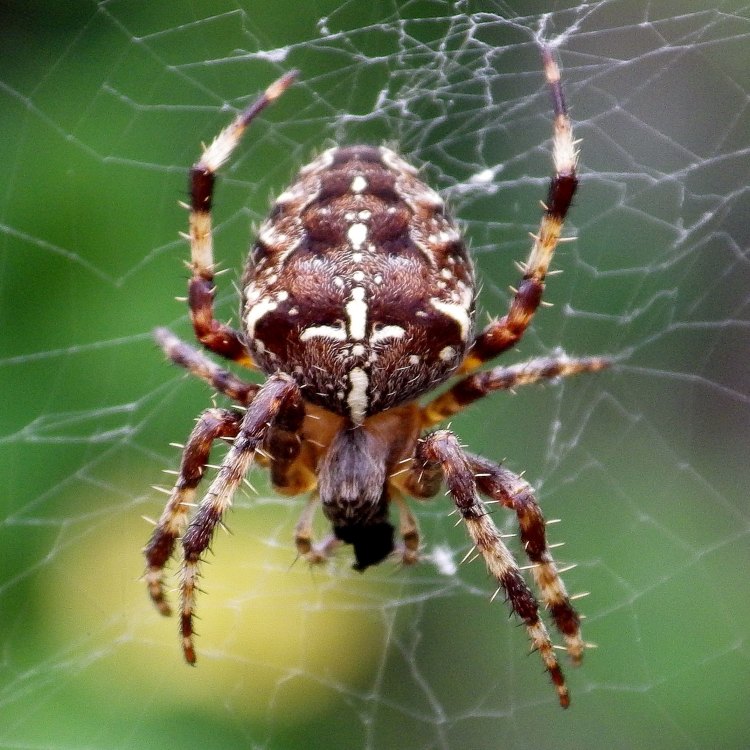
Garden Spider
- Adult Size: Female - 15-20 mm, Male - 5-10 mm
- Average Lifespan: 1-3 years
- Reproduction: Sexual
- Reproductive Behavior: Males perform courtship rituals and deposit sperm on a web
- Sound or Call: No sound or call
- Migration Pattern: Non-migratory
- Social Groups: Solitary
- Behavior: Builds orb-shaped webs to capture prey
- Threats: Habitat destruction, pesticides
- Conservation Status: Not evaluated (IUCN)
- Impact on Ecosystem: Maintains balance in insect populations
- Human Use: None
- Distinctive Features: Cross-shaped abdominal pattern, large fangs
- Interesting Facts: 1. Female garden spiders are much larger than males. 2. They are known for their impressive web-building skills. 3. Garden spiders are harmless to humans. 4. The cross-shaped pattern on their abdomen gives them their alternative name, the cross spider. 5. They play a crucial role in controlling insect populations in gardens and other habitats.
- Predator: Birds, larger spiders
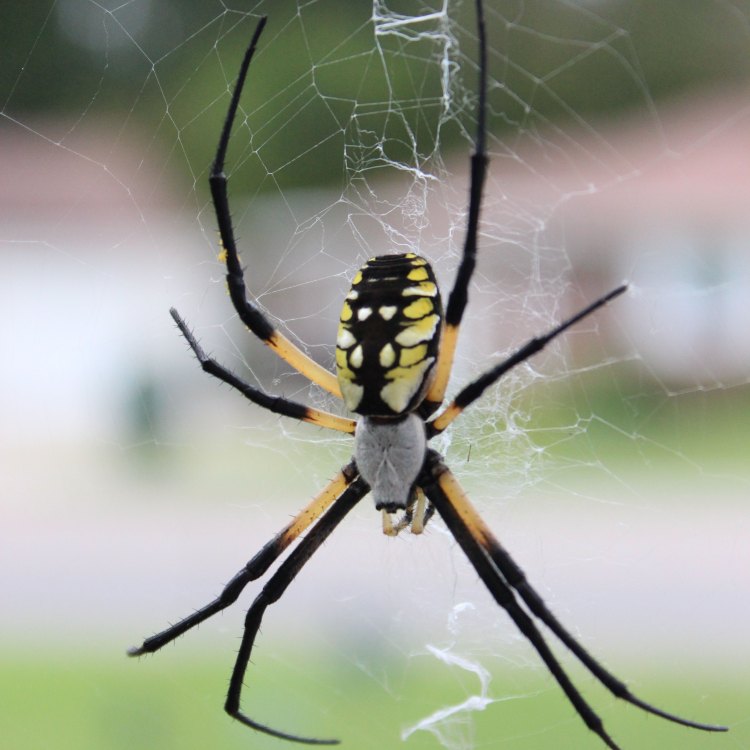
Araneus diadematus
Garden Spider: The Silent Protectors of Our Gardens and Beyond
As the warm breeze of summer rolls in and gardens begin to bloom, a common yet often overlooked arachnid spins its web amongst the foliage. The garden spider, also known as a cross spider for its distinct cross-shaped abdominal pattern, may seem like just another insect in our daily lives, but it holds a vital role in maintaining the balance of nature.With an average lifespan of 1-3 years, the garden spider may not seem like a long-lived creature, but it makes the most of its time on earth by playing a crucial role in our ecosystems. Let's dive deeper and discover the unique features and behaviors of this incredible arachnid, and why we should appreciate and protect them PeaceOfAnimals.Com.
Size and Lifecycle
The garden spider has a sexually dimorphic size, meaning that males and females differ significantly in size. Females can reach a size of 15-20 mm, while males only grow to be 5-10 mm. This size difference is one of their distinctive features and can be seen easily when observing a male and a female garden spider side by side.As with most spiders, the garden spider goes through four stages of the lifecycle: egg, spiderling, juvenile, and adult. Females typically lay their eggs in the fall, in a cocoon-like structure attached to a tree or shrub near their web. These eggs hatch in the spring, and the spiderlings emerge. The spiderlings are then left to fend for themselves as their mother will have passed away during the winter. Juvenile garden spiders look very much like their adult counterparts, just smaller in size.
Reproduction and Behavior
The garden spider follows the traditional model of sexual reproduction Great Dane Mix. The males perform elaborate courtship rituals to attract females and deposit their sperm on the female's web. These rituals involve tapping the web in specific patterns and vibrations to signal their intentions.Females have the final say in choosing a mate, and if their advance is accepted, the male moves closer and deposits his sperm on a small web structure called the sperm web. The female then absorbs the sperm and fertilizes her eggs when she is ready.
Web-Building and Prey Capture
One of the most impressive features of the garden spider is its web-building skills. They are known for their orb-shaped webs, which are intricately designed to capture prey. These webs are sticky and visibly stronger than other spider webs, thanks to the spider's ability to reinforce it with silk.To build their webs, the garden spider begins by releasing a silk thread and allowing the wind to carry it to a nearby object, such as a tree or shrub. They then climb back up and release more strands until their web takes shape. Once completed, the garden spider sits in the center, waiting for vibrations that signal the capture of prey.
Once prey is caught, the garden spider moves quickly to immobilize its prey by wrapping it in silk and injecting it with venom from their large fangs. They then use their sharp claws to tear and chew their food into smaller pieces, making it easier to consume.
Threats and Conservation Status
Like many species, the garden spider faces threats in its habitat. Habitat destruction and the use of pesticides pose a significant risk to their population. These spiders rely on trees and shrubs to build their webs and hibernate in the winter. With increasing deforestation and pesticide use, their habitats are shrinking, and their food sources are diminishing.However, the garden spider's conservation status has not been evaluated by the International Union for Conservation of Nature (IUCN). This lack of assessment is due to their widespread distribution and adaptability to different habitats. Yet, even though they may not be categorically endangered, their population is not immune to the effects of human activities.
The Crucial Role of the Garden Spider
As we've seen, the garden spider is a master web-builder, a skilled hunter, and a protector of its ecosystem. It plays a vital role in controlling insect populations, such as flies, mosquitoes, and other insects that can be harmful to plants and humans. Without garden spiders, these insect populations could multiply, leading to imbalances in the ecosystem.Garden spiders also serve as food for other creatures, such as birds and larger spiders, making them an essential part of the food chain. Without them, the balance of nature could be disrupted, leading to unforeseen consequences.
Interesting Facts
Apart from their distinctive size and web-building skills, there are many interesting facts about the garden spider that make them unique and fascinating creatures.Firstly, the female garden spider is much larger than the male. This size difference is not uncommon amongst spiders, as females tend to be the larger sex. However, the extreme difference in size between male and female garden spiders makes them stand out.
Secondly, garden spiders are harmless to humans. They may look scary with their large fangs and their ability to build giant webs, but they pose no threat to humans. In fact, they prefer to stay away from people and only bite if provoked or threatened.
Thirdly, the cross-shaped pattern on their abdomen gives them their alternative name, the cross spider. This pattern is unique to each spider and helps to camouflage them from predators. It also makes them easily identifiable when observing them in the garden.
The Human Use of Garden Spiders
Apart from their important role in maintaining ecosystems, garden spiders do not have any direct human use. They are not used in traditional medicine or for any other purpose. However, they do indirectly benefit humans by helping to control harmful insect populations, such as mosquitoes, in our gardens and homes.In Conclusion
In conclusion, the garden spider may seem like just another insect in the grand scheme of nature, but it holds a crucial role in maintaining balance and harmony in our ecosystems. From their impressive web-building skills to their important role in controlling insect populations, these spiders play a vital part in our environment.Yet, as with many species, the garden spider faces threats from human activities. We must recognize their importance and take steps to preserve their habitats. By doing so, we can ensure that these silent protectors continue to thrive and maintain the balance of nature for years to come. So the next time you see a garden spider spinning its web, take a moment to appreciate the important role it plays in our world.
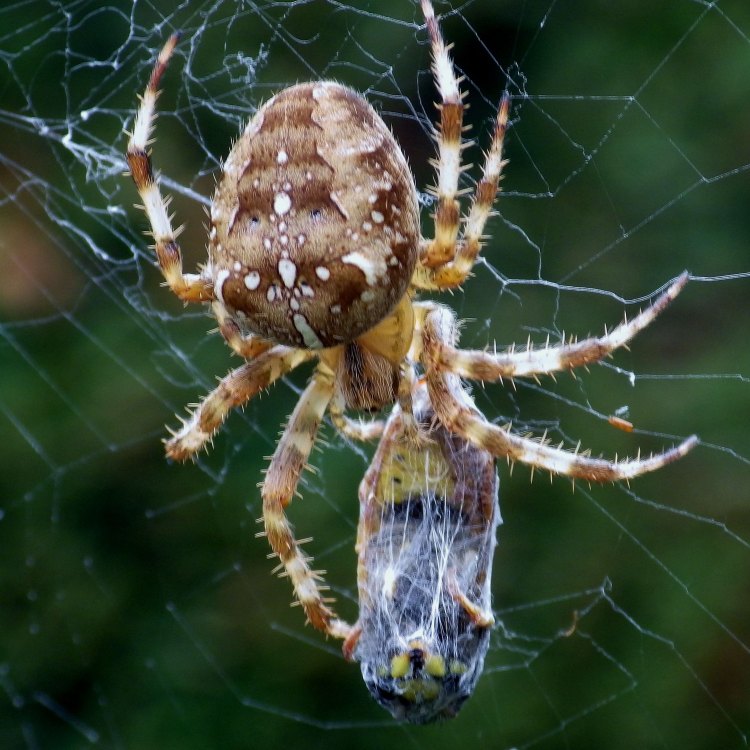
The Beautiful and Fearless Garden Spider
Disclaimer: The content provided is for informational purposes only. We cannot guarantee the accuracy of the information on this page 100%. All information provided here may change without prior notice.

